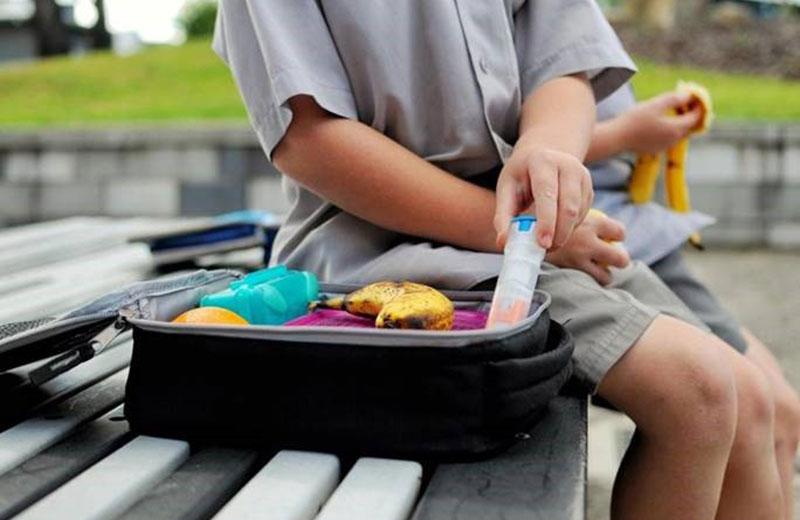Sending a child with a food allergy to school can be stressful. Families may have questions and concerns such as, “Who will help my child manage their food allergy at school?”; “Will staff know what to do in case of an emergency?”; “Will my child be safe?”
The entire school has a role in keeping students with food allergies safe. Having open and ongoing conversations helps build trust between schools and families and creates a more allergy-aware school.
“Having your child aware is key! With our daughter, she was the champion of what went into her body. When unsure of the ingredients, she knew not to eat it.” - Dena Ferretti, RD
Whether you’re a teacher, staff member, parent, or guardian, here are a few questions that can help start a conversation about food allergies at school:
- Have school staff reviewed and understood the student’s personal Anaphylaxis Emergency Plan? Make sure this form is in a safe and confidential place, easily accessed by staff who need it.
- What strategies does the school use to reduce the risk of food allergy exposure? These could include basic food safety rules such as handwashing, or other prevention strategies such as not allowing certain food allergens into the school, or creating “allergy aware” zones.
- Do staff receive ongoing training about food allergies and anaphylaxis? The free online Anaphylaxis in schools course teaches the basics of anaphylaxis prevention and management.
- Have staff and students practiced what to do in case of an anaphylaxis emergency? Food allergy drills can help both students and staff notice signs of a severe allergic reaction and act more quickly in emergency situations.
- Has the school considered including food allergies in the curriculum? The Allergy Awareness Challenge curriculum gives K-12 educators presentations, activities, games, and posters they can use to teach students about food allergies and prevention.
- How does the school let parents know about food allergy policies? School newsletters and bulletin boards are great places to post reminders and share handouts such as Peanut and Nut Aware Lunches & Snacks.
- How will the school be inclusive of students with food allergy? Aim to offer foods that all students can safety enjoy and/or have some allergy-aware items on hand. For example, aim for non-food rewards.
“Being a dietitian with a child who has a food allergy, we took this opportunity to provide a list of snacks that were safe to eat. This way, when other parents were asking about safe foods to share, our teacher had a list prepared for both safe and unsafe foods.” - Dena Ferretti, RD
Looking for more resources and support?
Food Allergy Canada offers a variety of resources and virtual supports for schools, families, and children, including:
- Back to School Food Allergy Checklist: A checklist to help families and children with food allergies prepare for school.
- Anaphylaxis Emergency Plan: This form lists a child’s allergy, signs and symptoms, medications, emergency contact information, and what to do in case of a reaction.
- Allergy Pals and Allergy Allies programs: Fun online mentorship programs for children with food allergies ages 7—15 years.
- Back to School recorded webinar: A 1-hour webinar for parents and guardians about managing food allergies at school.
- Small group webinars: Webinars for parents and guardians of children recently diagnosed with food allergies.
- Food Allergy and Schools (K-12) webpage: Free resources for the classroom, including posters, tipsheets, and activities.
- The Ultimate Guidebook for Teens with Food Allergies: Book written by youth that provides firsthand information on living with severe food allergies.
For more information about food allergies in schools, see the Resource Guide for Allergy Aware Schools or contact a Northern Health Population Health dietitian at PopHthNutrition@NorthernHealth.ca or 250-631-4236.














Comments